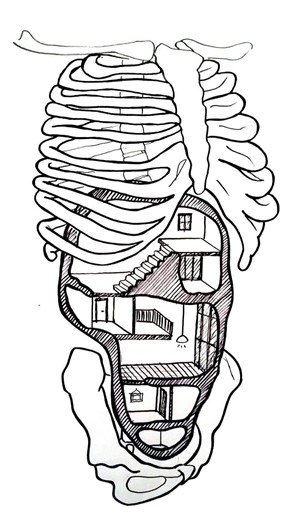There is a school of thought very close to my heart, which says that our health and well-being builds from the middle. It is from the midline that all our muscles, organs, and tissues align and work in synergy for the greater good. And a big part of that involves the psoas muscle and breathing.
When I speak about respiratory health I always point this out. We can only restore our health by working on a strong core (physically) and a solid foundation (nutritionally).
The Mechanics of Breathing
Let’s talk about the diaphragm, our major breathing muscle – a thin sheet of muscular tissue underneath the lungs that dictates how we breathe. One of the first exercises I ask clients to do is to strengthen and take control of the diaphragm. But what is important is to see the interaction of the muscles, what else affects your breathing mechanically?
In fact, the diaphragm and the pelvic floor muscles (there are about 20 small muscles there) should work together in synergy. The big question is how muscles down there can interfere with breathing?
Well, technically, they don’t. But there is one major player in the big breathing league, which affects both the diaphragm and the pelvic floor muscles.
Psoas Muscle And Breathing
It is the greatest hero of all the muscles – the psoas muscle (well, there are two – the minor and the major, but for the sake of making things simple, we will refer to them as The Psoas). The psoas, when tight, pulls on the pelvic floor muscles. And the fascia (connective tissue) joins the psoas to the diaphragm.
Having a tight psoas creates structural problems whilst interfering with the movement of fluids, constricting organs, and creating pressure on certain nerves. It will also impair the role of the diaphragm, causing a disruption in breathing patterns.
And it is fair to say that there is a reverse effect as well – if we’re often stressed, this will affect our breathing patterns which in turn will affect the psoas.
That’s why when we do muscle retraining to establish a good functional breathing pattern, we look at all muscles that help each other. My Functional Breathing Program not only helps your asthma symptoms subside, but your back will become stronger at the same time.
Simple stretches for the psoas muscles is something you can do starting today. These are your simple lunges, but be mindful of feeling the stretch in the front of the hip, not so much in the calf. There are a lot of good videos for this on YouTube.
To learn more about how strengthening your psoas muscle and breathing work together, take a look at my Functional Breathing Program.

